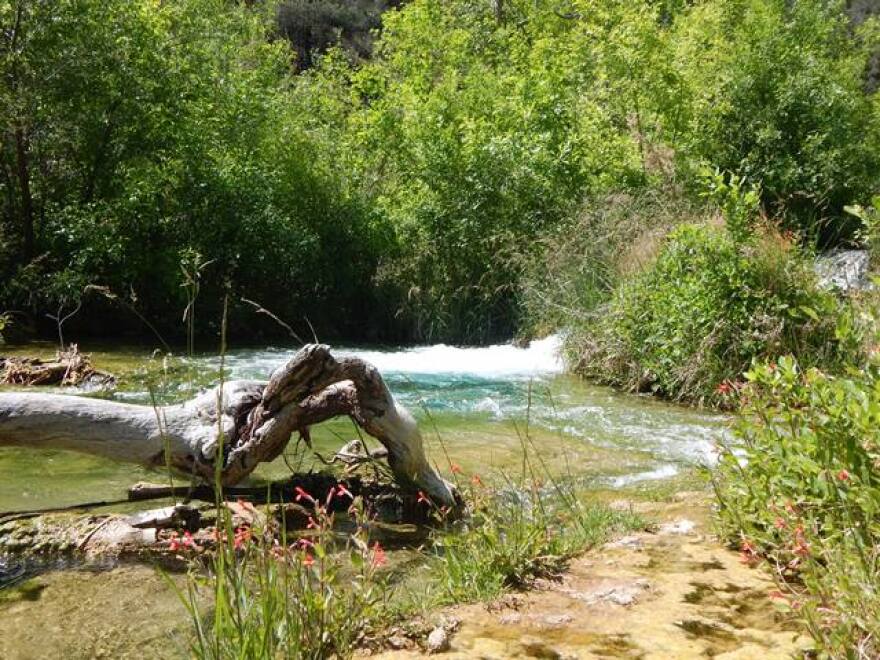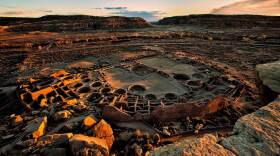A decade ago a dam came down at Fossil Creek, a tiny desert river tucked into the wilderness between Strawberry and Camp Verde. The decommissioning restored water to the creek’s rare travertine pools, but it also created a new problem: a flood of visitors. Now the U.S. Forest Service is working on a plan to save the creek from being loved to death.

Forest Service ranger Nicole Branton hears this question a lot: “Is this the way to Fossil Creek?”
Fossil Creek is special. It’s got hundreds of small pools and waterfalls sculpted by a slick stone called travertine. It’s one of the largest travertine systems on the continent.

Last year nearly 130,000 people drove the washboard road to Fossil Creek’s cool blue water. Branton says a third were turned away for lack of parking.
“It’s become a place to swim and come recreate, which is wonderful,” she says. “The problem is that there’s just not enough space for all those people.”
Fossil Creek used to be threatened by a century-old dam, which diverted nearly all the water out of the creek bed and into a flume. When the dam was decommissioned a decade ago, ecologists seized the chance to restore the riparian habitat.
Shaula Hedwall, a biologist with the U.S. Fish and Wildlife Service, says, “It was a huge effort, the biggest effort ever in Arizona and one of the largest efforts in the West to restore a stream to native aquatic species.”
Hedwall says the restoration was successful for plants and animals – but it sparked a massive onslaught of visitors. “There was so much press,” she says. “For those who didn’t know about it, it was all the sudden very visible and it was like, water. So people headed to the water.”


The region’s ecology began to crumble. Kayakers punched holes through the fragile travertine. The water filled with trash and human sewage. These days, no young cottonwoods and willows sprout near popular swimming spots, and common black hawks don’t nest there anymore.
That’s why the U.S. Forest Service is writing a comprehensive management plan for Fossil Creek. Hedwall is part of the planning effort. “That’s the biggest balance we’re all striving for: how do you maintain something like Fossil Creek for the long term but still allow people access and the ability to love and enjoy it?” she says.
The first step is an emergency measure requiring online reservations to visit the creek from April to October. Overnight camping is not allowed during that period. Eventually the Forest Service will decide whether to expand or shrink parking lots and how to handle the bathrooms.
That’s good news to people like Bettina Beaucamp of Prescott, who’s been hiking and camping here for 15 years. “I love this place so much,” Beaucamp says. “I’m very disturbed what’s happened to it over the years.” She hopes people will respect the new rules. “I don’t like all the regulation personally, but I’m putting up with it, because I know it’s going to protect this place.”
And, Beaucamp adds, Fossil Creek is a place worth protecting – even from ourselves.







